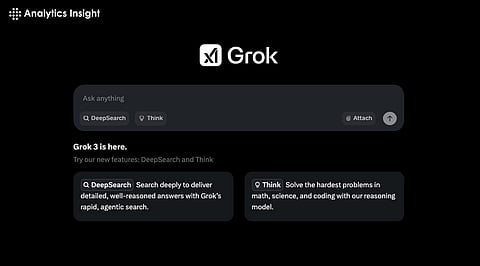

Grok 3, Elon Musk's latest AI innovation, has been making waves as the "smartest AI on Earth." While it boasts impressive capabilities, Grok 3 isn't perfect. In fact, it has struggled to provide accurate and consistent answers, leading to unpredictable behavior. Despite its strengths, Grok 3 has limitations that prevent it from reaching its full potential as a robotic giant.
Just imagine asking a friend for advice: one day, the friend gives a brilliant reply; the next day, sheer confusion reigns. Grok 3 can do that, too. Users have found that sometimes Grok 3 gives back sharp, brilliant responses. More often than not, though, it messes up answers that are vague or mutually contradictory.
In word processing, Grok 3 is like a wizard, but when it comes to images, it’s more like a rookie. AI often misreads visual data, from graphs to photos to diagrams, claim users.
The AI model may load a chart, but asking Grok 3 to analyze it could lead to inadequate insights; it tends to misinterpret key data points and provide vague responses instead. These limitations are particularly concerning in fields such as healthcare, design, and education, where visual data plays a crucial role.
It might be a quick fix for Grok 3, but it indeed fails to deliver while being taken to some very complicated problems. Users indeed state that this AI would often give a surface-level response without the depth and creativity that would help them solve the challenge.
If a business question is asked, Grok 3 would suggest, of course, that without originality or creativity, the problem would be very general suggestions. This type of malfunction means a failure of its reasoning and analysis. While suitable for simple tasks, Grok 3 does not work when going to a more complex level for more complicated problems.
Grok 3 is fundamentally relevant to the world, and, while advanced, many users still have one question: can AI be this good under unpredictable conditions, just as any real-life application?
Under most unpredictable circumstances, a decision for stock trading or even emergencies must be made quickly. Grok 3 may or may not always show real-time applicability when required. Doubts, however, would be based on considering an AI being trained from the past on datasets but having no understanding of the evolving and unpredictable changes in the real world that form the interface. Thus, the outcome has remained questionable in life and death.
Like most of the advanced AI’s, Grok 3 also has quite a number of ethical and safety-related concerns. There are certain ongoing problems regarding biases in source data, misinformation, and misuse. This means that Grok 3, for example, might unwittingly cause harmful stereotypes and misconceptions by being trained on biased data.
That makes the banners flying for future misuse for ill ends, including fake deepfake construction or phishing tools. That work is very much needed to argue the basis of ethical and safe use for Grok 3. The more it learns, the worse it gets if left without safety measures.
Indeed, Musk’s Grok 3 is a remarkable feat, waiting for the fruits of artificial intelligence that have never been realized in terms of perfection. However, the real-life application of AI is blemished due to inconsistent replies, the inability to analyze images, and surface solutions to problems. The seeming lack of opportunities for Grok 3 only raised questions about its applicability to reality while also considering the ethical issues involved.
Grok 3 holds great promise for the future, but as long as its flaws remain unaddressed, it will struggle to reach its full potential. Those who work within this field have a clear understanding of the technology's limitations and will evaluate its use rationally. After all, even the "smartest AI on Earth" can improve. If innovation continues, perhaps one day Grok 3 will earn that title.
